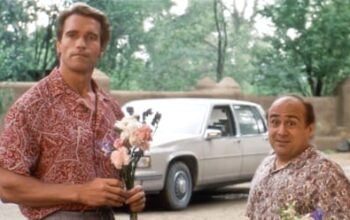
N
Nostalgia is prevalent in popular culture, whether artificially created or naturally occurring, in ways that can be jarring or comforting. Examples include rewatching the TV show Girls, the reunion of NSYNC, the resurgence of Kate Bush through Stranger Things’ 80s references, the new Fatal Attraction, an updated version of Wednesday Addams, and another Sex and the City. However, nostalgia can also be a trap. As Craig Jenkins wrote in Vulture’s review of Taylor Swift’s Eras tour movie, it is currently the most flashy and profitable form of nostalgia, often seen as a “retirement community” for the mind when it’s tired of exploring new places. This trend of capitalizing on nostalgia is evident in our streaming economy, with numerous reboots and revivals catering to our fondness for the past.
The widespread presence of nostalgia may be the reason it has a negative reputation. Looking back at the past is seen as simplistic, self-indulgent, and unoriginal. It can be seen as repetitive and trying too hard to romanticize something that has already happened. Even when used effectively, relying on people’s fondness for the familiar can be seen as cheap, as it is often used as a replacement for having something meaningful to say.
There are many criticisms awaiting Alexander Payne’s film, The Holdovers, which was released in the US at the end of October despite being a holiday-themed movie. The film is a heartwarming comedy-drama about three outcasts – grumpy professor Paul Hunham, cynical teenager Angus Tully, and mourning mother Mary Lamb – who find themselves stuck together at a New England prep school during the holiday season in 1970.
Payne, who was awarded an Academy Award for his 2004 film Sideways, which also had a clever mix of wit and emotion, takes on a dual mission of nostalgia in his latest film. The movie strives to realistically depict the 1970s while also deliberately appearing as if it were actually made during that time period. The film incorporates various elements from the era – old MPAA and distributor logos, digitally added scratches, and a deep-voiced narrator in the trailer – as well as using specific techniques such as coloring, fade-outs, and zoom lenses to create a convincing portrayal of the past. It stands out from many other contemporary films, including those set in the same time period, as it appeals to the modern idea that anything that appears old is automatically considered high-quality. Even just a decade’s difference or the mere illusion of half a century adds a sense of weight and importance.
The Holdovers is a masterful production that skillfully captures the poignant loneliness often felt during special occasions and the timeless desire for human connection. Despite claims that it may seem gimmicky, the film is exquisitely crafted and expertly performed, evoking a sense of nostalgia for a time when originality was more prevalent in the film industry. While some critics have remarked that they don’t make movies like this anymore, there are still character-driven dramas being made today. The Holdovers stands out as a reminder of the era when quality storytelling was more valued and not overshadowed by the quantity of easily produced streaming content.
Effective nostalgia is not about appearance or imitation, but rather about emotion. The Holdovers captures this perfectly, encapsulating a particular time period rather than exploiting it. As someone who did not live through the 1970s, my understanding of it is based on movies, photographs, and old magazines from my grandmother’s collection. These sources are all flawed and limited, lacking the direct experience of living in that era. While watching The Holdovers, I couldn’t help but think of my grandmother’s home, where she and my grandfather shared a love for certain material possessions and endured harsh New England winters. Well-executed nostalgia has the power to transport you to another time and place.
However, the main focus on character in The Holdovers prevents it from simply being a nostalgic and sentimental story. The three remaining teachers at Barton Academy, despite their pride and stubbornness, also reflect on the past. Paul Hunham, who is obsessed with ancient civilizations, often belittles students as “hormonal vulgarians” and uses the Peloponnesian war as a metaphor. He would argue that the word “nostalgia” comes from the Greek words for “home” and “pain,” and even compares himself to Odysseus. Angus, a 17-year-old rebel, already struggles with a broken and distant family. Mary, grieving the loss of her son in Vietnam, faces her first holiday season alone. In one particularly powerful scene, alcohol, music, and the forced cheerfulness of a holiday party bring Mary to tears. Through Randolph’s skilled writing, Mary’s grief and strength are interwoven in a tangible and vivid way.
Ignore the advertisement for the newsletter.
after newsletter promotion
Sometimes, The Holdovers can be quite open about its emotions – Paul often goes on rants that are both grumpy and sincere, praising the study of history as a tribute to humanity, with all its flaws and greatness. For him and for this movie, looking back to find common ground is seen as a noble but possibly solitary mission. (Personally, I share this viewpoint.) Payne’s nostalgic approach avoids the trap of being cheap by bringing us closer to Paul, Angus, and Mary – their personal struggles, vulnerabilities, and longing for something or someone else during the holiday season, even when surrounded by loved ones. As with anything centered on nostalgia, The Holdovers may either captivate you or not. At least it takes a unique path in pursuing the everlasting longing for what once was.
-
The movie The Holdovers is currently playing in theaters in the United States and will be released in the United Kingdom on January 19th.
Source: theguardian.com


